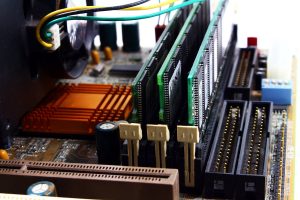Critical Reasons Why You Should Invest in a CMMS Now

A Computerized Maintenance Management System, commonly referred to as CMMS is a program that helps in the automation of certain operations in your business. The concept is not something that is new, various versions of it have been in existence since the late 1980’s. With the help of modern technology, CMMS is now available cheaper and is more accessible than ever before.
If you are running a business and are looking for effective ways that can help in the streamlining of your operation, then you should be definitely considering CMMS. We’ll discuss more reasons as to why.
#1 Reduction in Your Overall Downtime
Downtimes are a bane for any business, particularly for those engaged in the manufacturing sector. However, by considering potential issues and carrying out planned repairs in advance can help you in the significant reduction of unexpected equipment breakdowns.
A preventative maintenance plan is widely considered to be the most effective maintenance plan. While a corrective maintenance plan focuses on damage control after it happens, while the preventative maintenance plan focuses on damage reduction before it happens. Some of you might consider it counter-intuitive to invest on potential problems of the future. However, going with a preventive maintenance plan will reduce maintenance costs in the long term, thus saving you more money.
#2 Reduction in Workload
Around 8 out of 10 companies still employ manual tools, such as Excel spreadsheets, to document data and conduct their work processes. This results in your workers spending more of their valuable time on mundane administrative tasks, which can be spent on something more productive.
Based on Limble CMMS cloud software’s research, just 2 days/week of admin work will transfer to around 800 hours of time spent on the mundane, per year. However, a computerized maintenance management system will fix it for you and save a lot of those hours. That’s mainly because of integrated tracking hardware and software that automates the calculation of metrics such as stock levels, gross and net profit, and stock location as it happens in real time.
#3 Reduction in Human Error
Another problem that plagues business are human errors. Human errors are unavoidable in any enterprise that runs predominantly on manual labor. Though these could have been avoided with a little more attentiveness, it misses at times. Unfortunately, when your employees are working long hours or haven’t had enough training, or simply out of focus for a fleeting moment, problems can occur.
Automation softwares like CMMS are a lot more reliable with certain aspects of your business. They can help you prevent a lot of those avoidable problems in operations, leaving your employees to focus on their job roles more effectively.
#4 Improves Productivity Dramatically
One of the most important consideration for using a CMMS is their innate ability to record Key Performance Indicators (commonly known as KPIs). This process helps in the tracking of your business’s productivity and your employee performance metrics. Thus, helping you to pinpoint on what your staff team is doing wrong—or right! The CMMS will be able to quantify this data and present it as an easily understandable report.
In addition to that, you will also be able to track the average cost of maintaining your equipments. This will help you in quantifying the data and figure out how much money you are saving over a period of time. You will be able to use this information for improving your business plan and make important decisions related to where you can invest your money.
#5. Better Data and Reporting
CMMS captures and stores a wealth of maintenance-related data, such as work orders, asset performance, and downtime history. This real-time information allows maintenance teams to respond promptly to emerging issues, reducing downtime and preventing major breakdowns.
The ability to track and measure key performance indicators (KPIs) enables businesses to evaluate the effectiveness of maintenance efforts and make data-driven decisions to optimize maintenance strategies. Customizable reports generated by the CMMS offer tailored views of the data, facilitating compliance reporting and audit readiness for industries with regulatory requirements.
Additionally, with a deeper understanding of maintenance costs, asset lifecycles, and equipment trends, businesses can create more accurate budgets, forecast maintenance expenditures, and efficiently plan resource allocation.
Overall, the enhanced data and reporting capabilities of a CMMS empower businesses to enhance maintenance practices, reduce costs, and maximize the lifespan of their assets.
#6. Scalability and Integration
Scalability and integration are key features that make a Computerized Maintenance Management System (CMMS) a versatile and valuable tool for businesses. CMMS solutions are designed to accommodate the evolving needs of organizations, making them scalable as businesses grow or their maintenance requirements change.
Whether it’s managing more assets, expanding to new locations, or incorporating additional users, a scalable CMMS can adapt to these expanding demands seamlessly. Moreover, CMMS platforms are designed to integrate with other business systems, such as Enterprise Resource Planning (ERP) software, Internet of Things (IoT) devices, and other maintenance-related applications.
This integration streamlines data flow between different systems, reducing manual data entry and ensuring a unified and efficient business ecosystem.
By leveraging the power of integration, businesses can enhance their maintenance processes, access real-time data across platforms, and make more informed decisions that drive overall operational efficiency and productivity.
Whether it’s a small business or a large enterprise, the scalability and integration capabilities of a CMMS contribute to its effectiveness and long-term value for organizations seeking to optimize their maintenance operations.
#7. Remote Accessibility
Remote accessibility is a pivotal feature that empowers businesses to efficiently manage their maintenance operations from anywhere with an internet connection. With a Computerized Maintenance Management System (CMMS) offering cloud-based solutions, maintenance teams can access the system’s functionalities and data remotely, regardless of their physical location. This capability is particularly beneficial for businesses with multiple sites, distributed teams, or field technicians working off-site.
Remote accessibility allows maintenance personnel to receive real-time updates on work orders, asset status, and maintenance requests, enabling them to respond promptly to emerging issues and streamline communication.
Managers can monitor maintenance activities, track progress, and generate reports remotely, gaining valuable insights into the performance of assets and the maintenance team. This flexibility enhances overall productivity, reduces downtime, and promotes efficient collaboration among team members.
Additionally, remote accessibility ensures that critical maintenance information is readily available to decision-makers, enabling them to make informed choices even when they are not on-site.
If capital is your concern, a CMMS will pay for itself many times over in the long term. Recent studies reveal that a medium sized company will be able to cover their capital costs on CMMS within the first 14.5 months of investing. So while implementing a CMMS might look like a luxury in the short term, it has the potential to improve your entire operation over the long term and help you drive better results that you never thought were possible.
I hope this article was useful for you to learn about the importance of investing in CMMS and how it can help you to improve your business. If you have any doubts with regards to this, let us know through the comments and we will be glad to help you out. If you have any suggestions regarding how we can improve the article, let us know them through the comments as well for us to improve.






